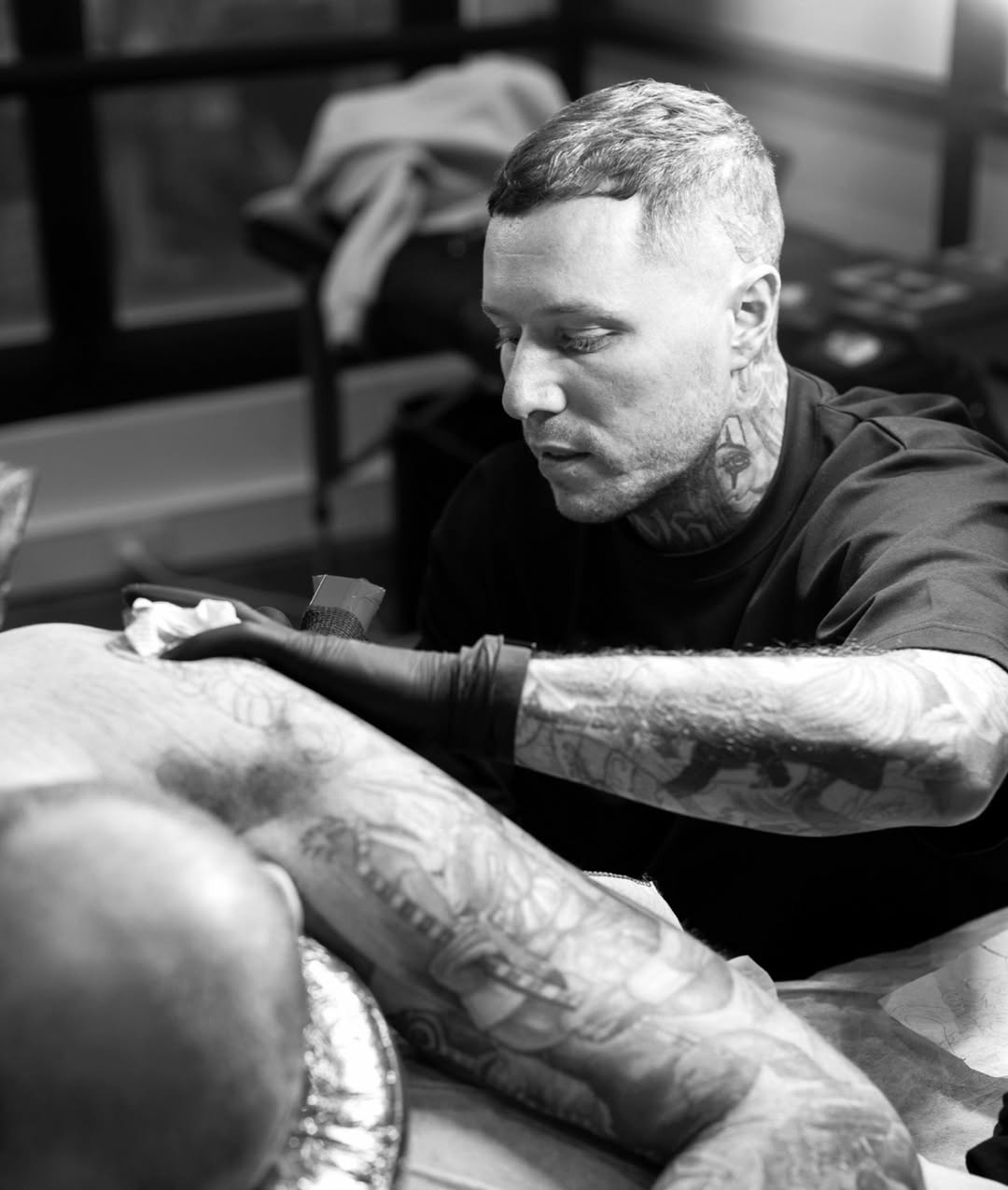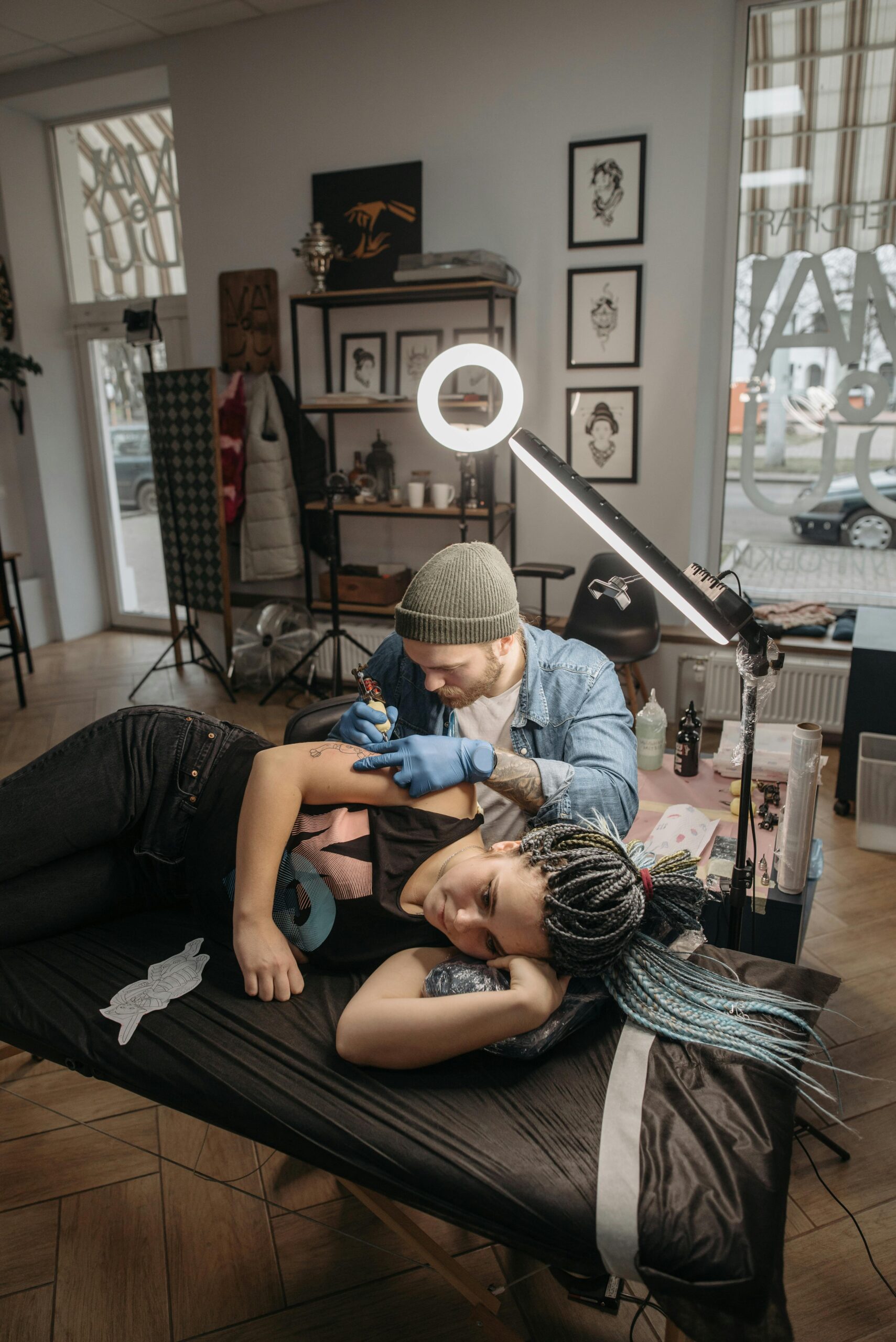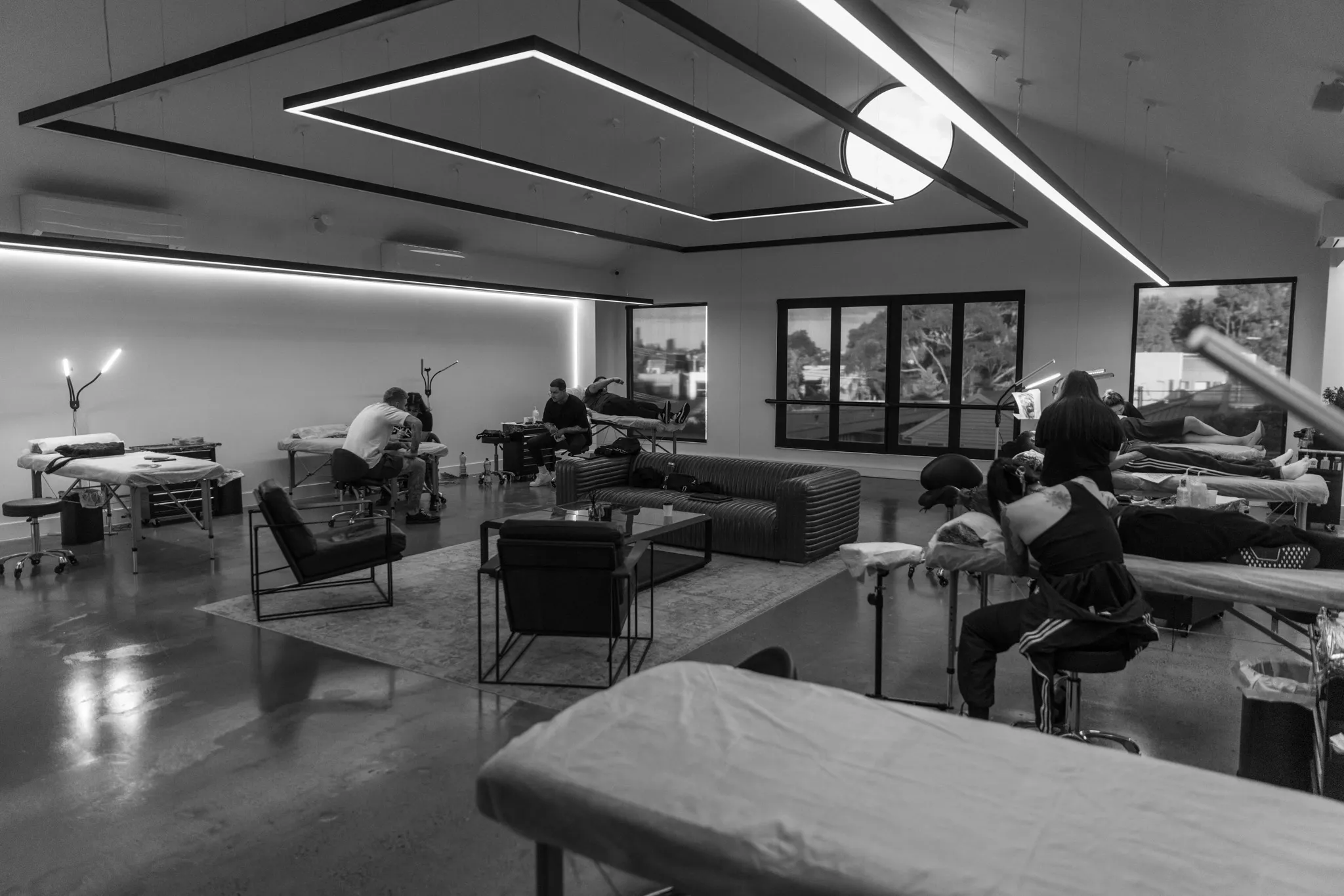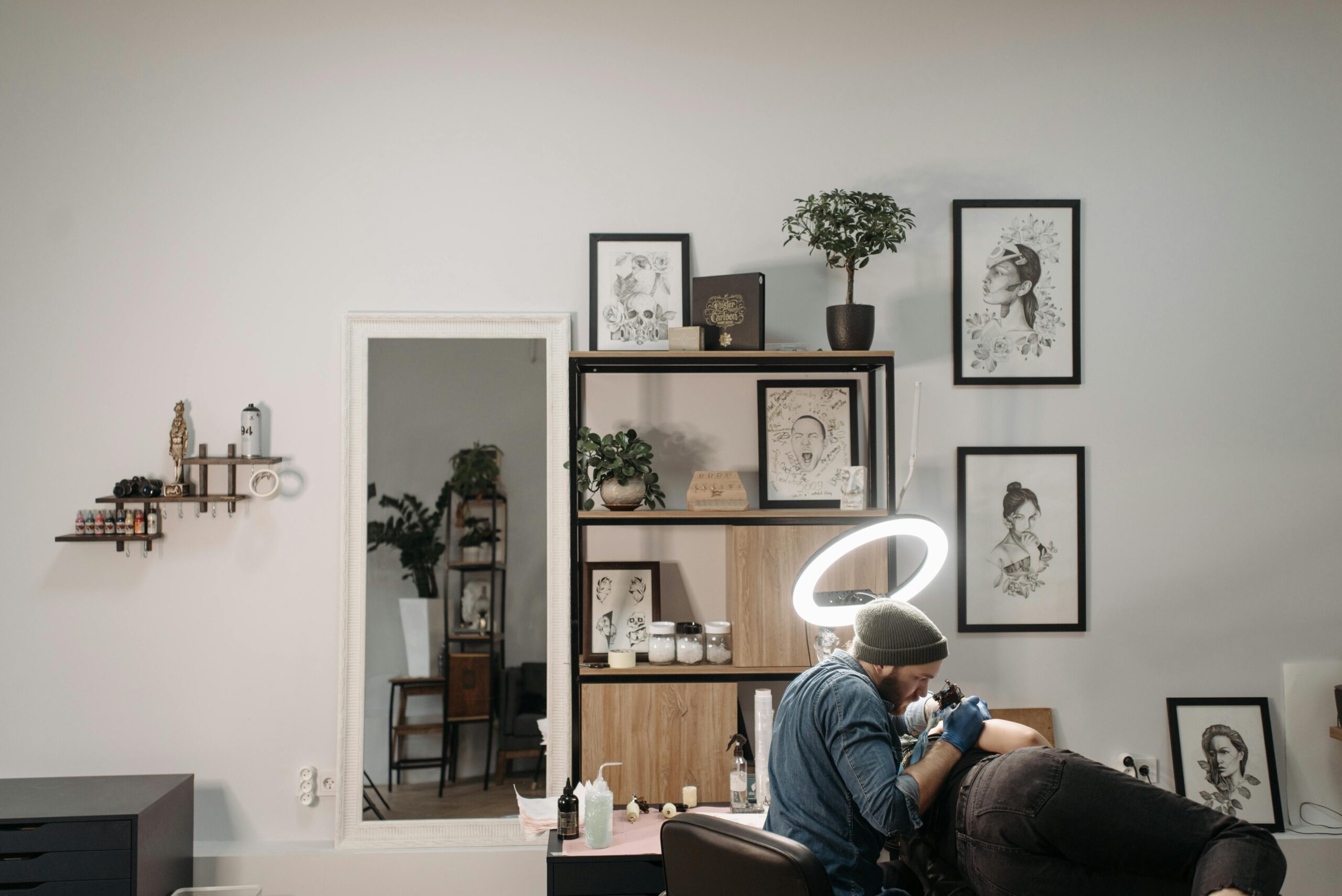Starting Smart: The Progressive Equipment Investment Strategy
Beginning an online tattoo course doesn’t require purchasing every piece of professional equipment immediately. Smart students follow a progressive investment strategy, acquiring tools as skills develop and needs emerge. This approach minimises initial financial pressure while ensuring you have appropriate equipment for each learning stage. Omnia Tattoo Academy takes this step for you, providing the perfect beginner Tattoo Kit to help you launch your tattoo career.
The total equipment investment for a professional tattoo setup typically ranges from $2,000-$5,000, but spreading purchases across your training period makes this manageable once your Tattoo Kit supplies start to run out. Many online tattoo course students recover their equipment investment through practice work on friends and early clients before course completion which helps cover most of the upfront cost. Understanding what to buy and when transforms equipment acquisition from overwhelming expense to strategic business investment.
Quality matters more than quantity in tattoo equipment. A few well-chosen, professional-grade tools outperform dozens of cheap alternatives. This guide from Luke Dyson, Founder of Omnia Tattoo helps you identify essential versus optional equipment, recognise quality indicators, and avoid costly mistakes that plague beginners who buy without proper guidance.
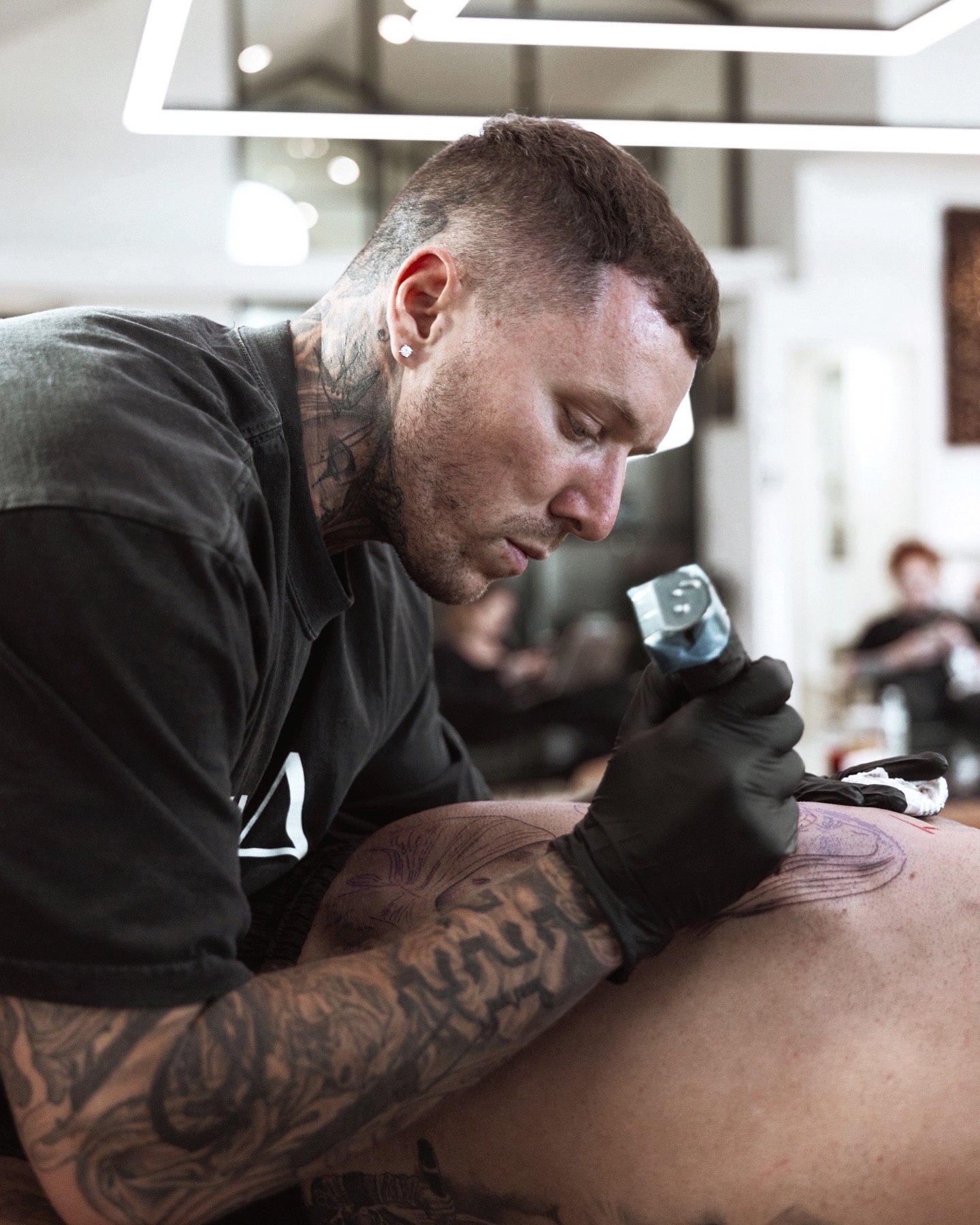
Phase 1 Essential Equipment (Weeks 1-4): $500-$800
Your initial equipment needs focus on practice and fundamental skill development. The online tattoo course begins with synthetic skin work, requiring basic but quality tools that are included in your Course Kit.
The practice skin investment ($50-$100) is a great additional choice early in your career providing added practice canvas. Quality synthetic skin that mimics human skin properties accelerates learning. I suggest buying 20-30 sheets initially—you’ll use more than expected as skills develop. Avoid ultra-cheap practice skins that don’t hold ink properly or tear easily.
Your Tattoo Kit comes with a machine setup suitable for beginners. Rotary machines offer gentler learning curves with consistent performance. If you’re looking to expand your toolkit, invest in entry-professional level equipment that remains useful as backup even after upgrading.
Initial needle selection ($50-$100) covers various configurations for different techniques. Round liners for line work, magnum shaders for filling, and round shaders for detail work. Buy small quantities initially to discover preferences before bulk purchasing. Cartridge needles simplify learning but cost more than traditional needles.
Power supply ($100-$150) must deliver consistent, adjustable voltage. Digital displays help monitor settings while learning optimal voltages for different techniques. Avoid unstable power supplies that fluctuate during work, causing inconsistent results and frustration.
Basic supplies ($100-$150) include ink caps, petroleum jelly, green soap, paper towels, and barrier protection. These consumables disappear quickly during practice. Buy bulk packages rather than small quantities for better value.
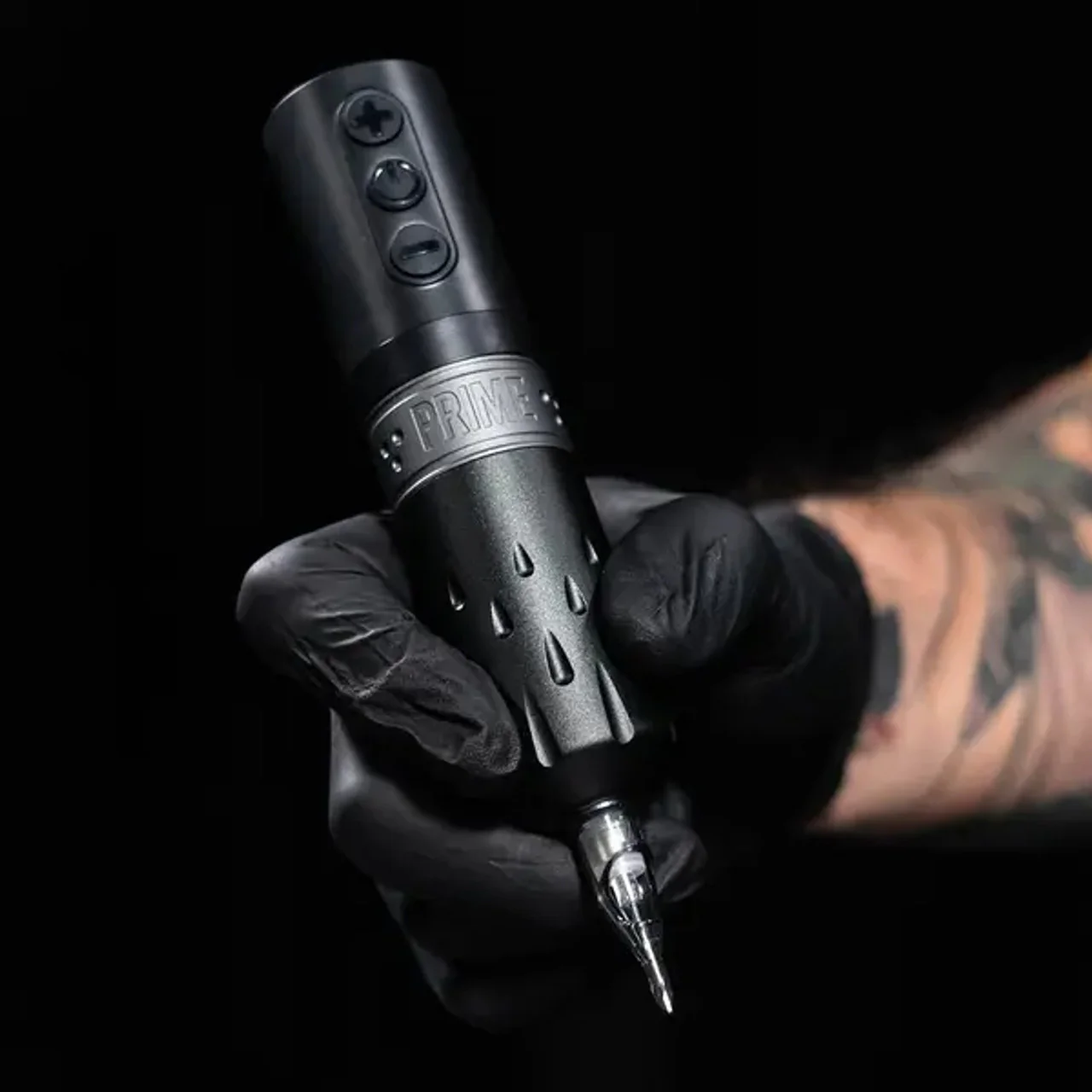
Phase 2 Skill Development Equipment (Weeks 5-12): $800-$1,200
As technical skills solidify, equipment needs expand to support diverse technique development and increased practice volume.
Upgraded machine options ($300-$600) might include a second machine for different techniques or a higher-quality primary machine. Many artists prefer different machines for lining versus shading. This phase often involves discovering personal preferences that guide future purchases.
Expanded needle inventory ($150-$250) covers specialised configurations for developing style preferences. Curved magnums, bugpin needles, and various liner configurations enable technique experimentation. Buy variety packs initially to test different options before committing to bulk purchases.
Quality ink selection ($200-$300) moves beyond basic black to include greywash sets and fundamental colours. Professional-grade inks provide consistent results and better healing. Avoid cheap inks that fade quickly or cause reactions. Build colour inventory gradually based on practice needs and style development.
Lighting equipment ($150-$250) becomes crucial as work complexity increases. LED ring lights or adjustable desk lamps with daylight bulbs reduce eye strain and improve precision. Poor lighting causes more mistakes than any other environmental factor.
Storage and organisation ($100-$150) maintains professional standards even during training. Toolboxes, drawer organisers, and proper storage protect equipment investments while establishing good habits for professional practice.
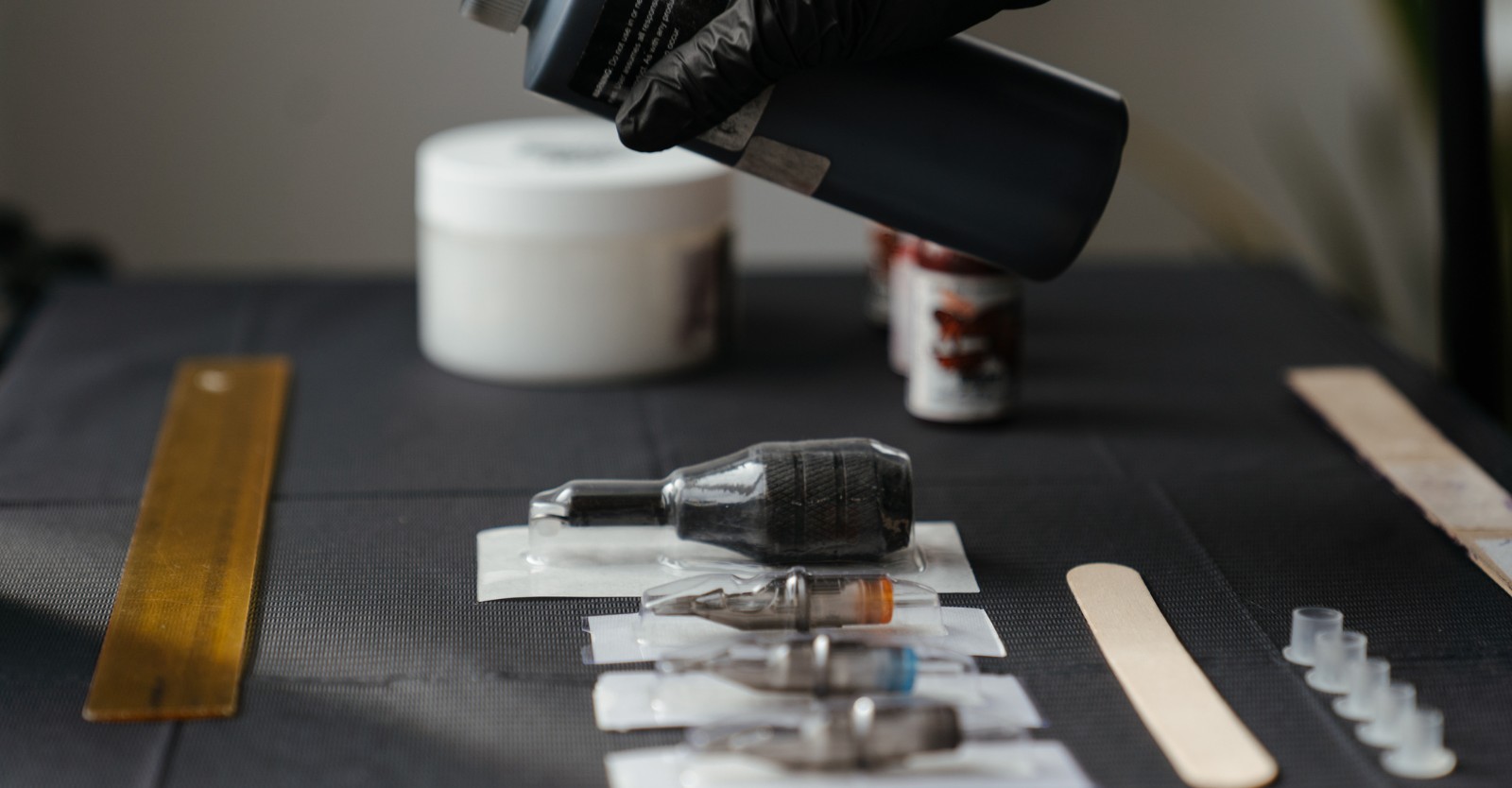
Phase 3 Professional Preparation (Weeks 13-24): $700-$1,500
Final training phases require professional-standard equipment that transitions seamlessly into commercial practice.
Professional machine upgrade ($400-$800) if not already acquired. This becomes your primary working machine for years ahead. Research thoroughly, read reviews, and choose machines with strong reputations for reliability and performance. Consider wireless machines for improved manoeuvrability.
Comprehensive needle inventory ($150-$300) covering all configurations you’ll use professionally. Bulk purchasing reduces per-unit costs significantly. Maintain inventory systems tracking usage and reorder points.
Complete ink palette ($200-$400) including full colour ranges from reputable manufacturers. Professional ink sets represent significant investments but provide consistency crucial for reputation building. Include speciality inks for effects like white highlights or UV-reactive colours.
Hygiene and safety equipment ($150-$300) meeting professional standards. Ultrasonic cleaners, autoclave or sterilisation pouches, sharps containers, and comprehensive PPE. Online tattoo courses emphasise safety standards—your equipment must support these practices.
Portfolio documentation tools ($100-$200) including decent camera or smartphone with good camera, ring lights for photography, and basic photo editing software. Portfolio quality significantly impacts employment and client attraction.

Professional Setup Additions: $500-$1,000
Establishing professional practice requires additional equipment beyond core tattooing tools.
Furniture and workspace ($200-$400) including adjustable chair, work surface, and client seating. Comfort during long sessions prevents fatigue and improves work quality. Adjustable equipment accommodates different working positions and client sizes.
Stencil and design equipment ($100-$200) including thermal copier, stencil paper, and transfer solutions. Accurate stencil application underlies successful tattoos. iPad or tablet for digital design work increasingly becomes standard.
Client comfort items ($100-$200) including armrests, pillows, and positioning aids. Comfortable clients move less, improving work quality and session efficiency.
Business equipment ($100-$200) including appointment scheduling systems, payment processing, and basic marketing materials. Professional presentation attracts better clients willing to pay appropriate rates.
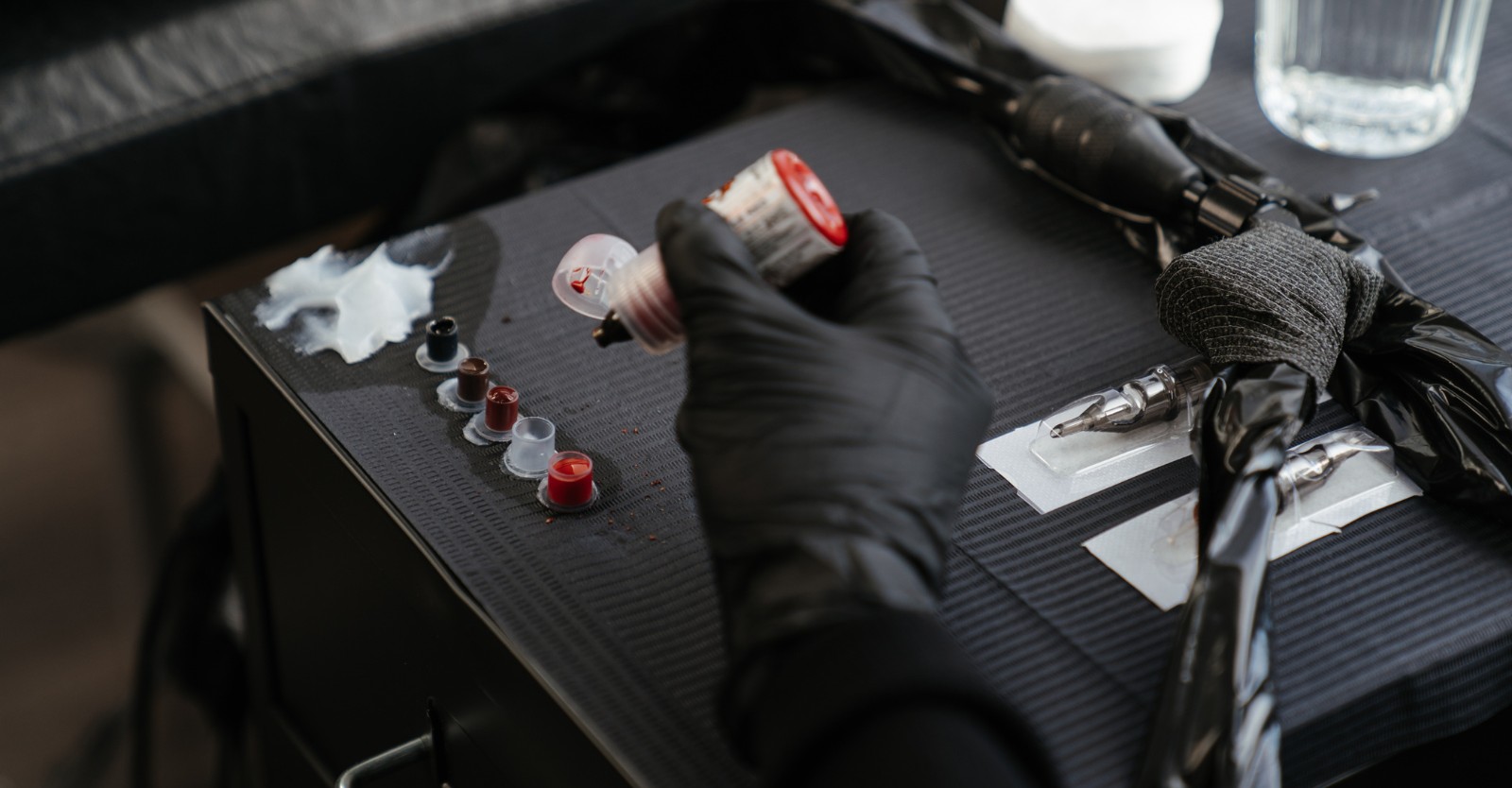
Smart Shopping Strategies for Students
Timing purchases strategically maximises value while minimising financial strain. Black Friday sales, end-of-financial-year clearances, and supplier education discounts significantly reduce costs. Many suppliers offer student discounts for online tattoo course members—always ask before purchasing, you never know your luck!
Building supplier relationships early provides long-term benefits. Regular customers receive better prices, early access to new products, and valuable advice. Local suppliers might offer payment plans or equipment trials.
The second-hand market offers exceptional value for certain items. Furniture, lights, and some machines maintain function despite previous use. However, never compromise on needles, inks, or safety equipment where sterility and reliability are non-negotiable.
Bulk buying with fellow students reduces individual costs. Coordinating purchases of consumables like needles, gloves, and barrier film achieves wholesale pricing. Online tattoo course communities facilitate group purchasing arrangements.
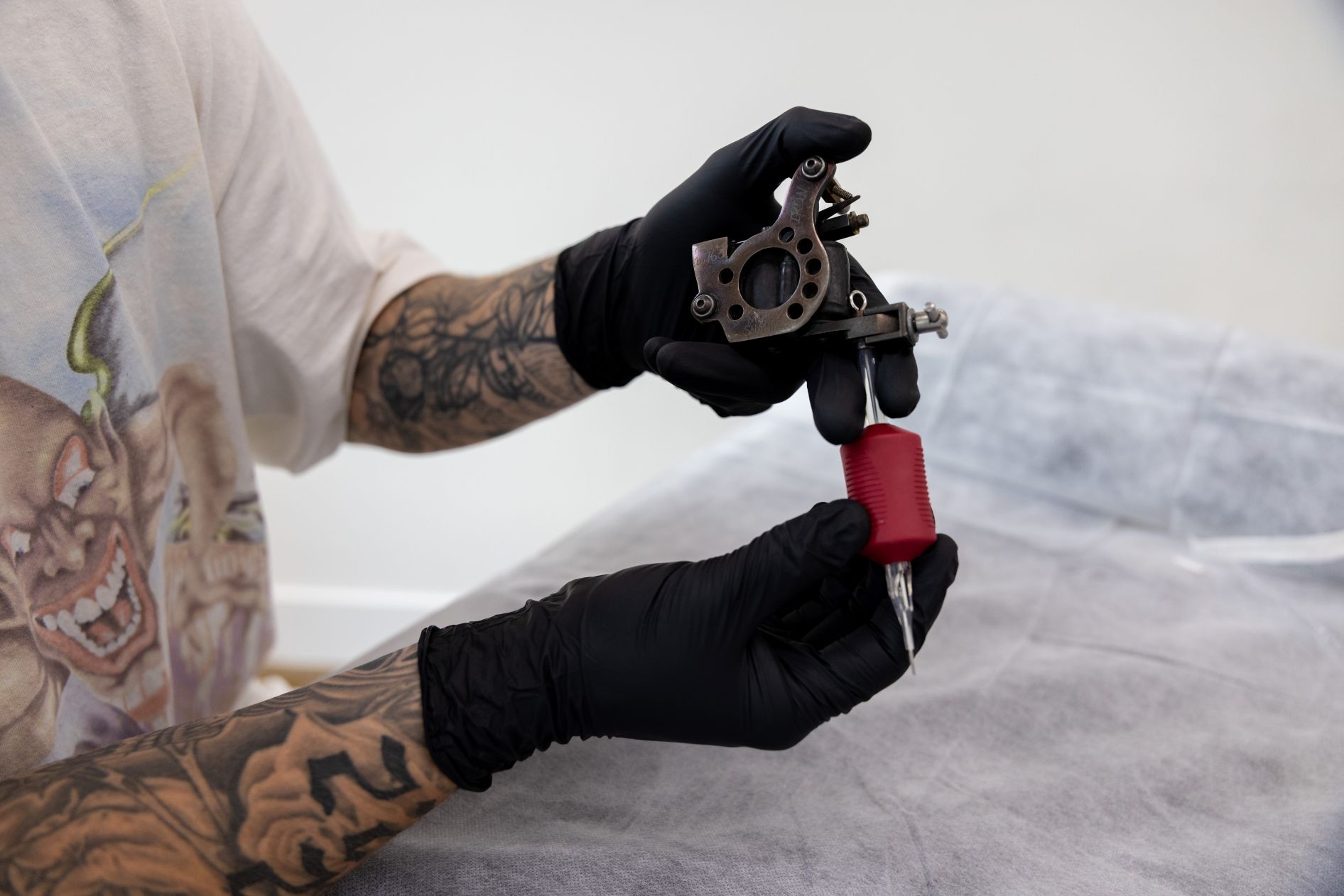
Avoiding Common Equipment Mistakes
The cheapest option rarely provides best value in tattoo equipment. Machines that break after minimal use, needles that cause excessive trauma, and inks that fade rapidly damage reputation and require replacement—costing more than initial quality purchases.
Overbuying initially creates financial pressure without improving learning. You don’t need 50 ink colours when learning basic techniques. Build inventory gradually as skills and client demands develop.
Ignoring safety equipment to reduce costs risks health, legal compliance, and professional reputation. Proper barriers, sterilisation, and disposal systems are non-negotiable from day one.
Failing to maintain equipment properly shortens lifespan and compromises performance. Regular cleaning, proper storage, and timely maintenance protect investments and ensure consistent results.
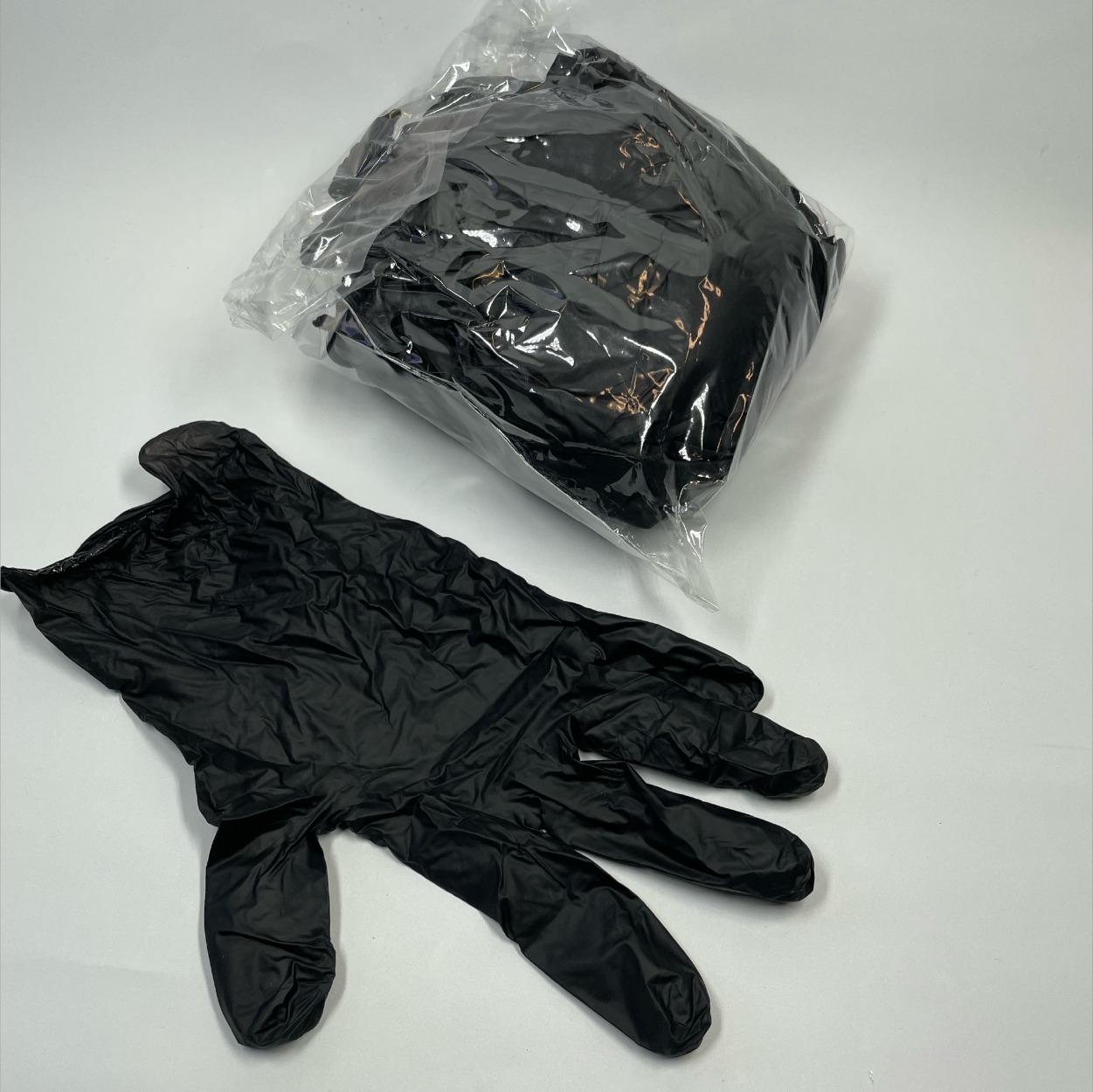
Your Equipment Investment Timeline
Successful online tattoo course students typically invest $4,000-$5,000 during your initial training inclusive of the kit costs, with additional $1,000-$2,000 in the first year of practice. This investment should generate businesses earning $50,000-$100,000 annually—exceptional return on investment.
Equipment and course payments like Omnia’s, are often spread across 6-24 months, making monthly costs manageable. Many students fund purchases through practice work, selling art, or payment plans. The equipment acquired during training serves for years, with only consumables requiring regular replacement.
Starting your online tattoo course journey doesn’t require immediate massive investment. Following this progressive equipment guide ensures you have appropriate tools for each learning stage while building toward professional practice. Quality equipment combined with quality education creates the foundation for successful tattoo careers.
